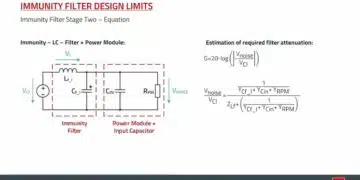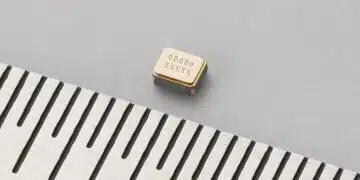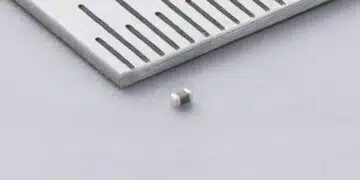This video from Sam Ben Yaakov provides detailed insight into circuit model of coupled inductors and demonstrate it in some practical applications.
This presentation begins with a discussion on the behavior of coupled inductors, which is independent of the location of the leakage inductances within the physical element. This means that the two-port network’s behavior from the outside does not reveal anything about the inside.
The second point is that the inner circuit topology of the coupling inductors model can take many different forms, as long as it provides the specified L1, L2, and M values. If you see L1, L2, and NM as specified or required, then the inside could be of any particular configuration.
Introduction
Coupled inductors are foundational components in electrical engineering, particularly within power electronics and magnetic circuit design. This article presents the versatile coupled inductor circuit model, exploring its theoretical basis, equivalent circuits, and practical applications.
Fundamental Concepts of Coupled Inductors
When two inductors are positioned closely, they exhibit mutual inductance due to the magnetic flux generated by one winding influencing the other. This coupling is not always perfect—some magnetic flux may escape, referred to as leakage flux. Leakage can be symmetrical or asymmetrical but does not affect the external behavior of the coupled inductors owing to the principles governing two-port networks.
Two-Port Network Representation
A coupled inductor functions as a two-port network where the relationship between input and output voltages and currents remains consistent, regardless of internal circuit configurations. The defining equations are:
- V₁ = L₁ (dI₁/dt) + M (dI₂/dt)
- V₂ = L₂ (dI₂/dt) + M (dI₁/dt)
Where:
- V₁, V₂ are the input and output voltages,
- I₁, I₂ are the input and output currents,
- L₁, L₂ are the self-inductances,
- M represents the mutual inductance.
These equations can be modeled using different equivalent circuits, providing flexibility in representing real-world scenarios.
Equivalent Circuit Models
- Classical Transformer Model: Includes an ideal transformer with series leakage inductances and magnetizing components. The turns ratio is √(L₂/L₁).
- Generic Equivalent Circuit: Introduced by Margaron and Encard, this model incorporates an additional parameter, X (ranging between coupling coefficient k and 1), allowing tunable inductance values while maintaining consistent external characteristics.
Coupling Coefficient and Measurement Techniques
The coupling coefficient k quantifies the efficiency of magnetic coupling and is calculated as:
k = √(1 – (L_short / L_open))
Where L_short is the measured inductance with the secondary short-circuited, and L_open is the inductance with an open secondary.
Practical Application: LLC Converter Design
For resonant converters such as the LLC topology:
- Define L₁ = L_r + L_m, where L_r is the resonant inductor and L_m the magnetizing inductance.
- L₂ represents the reflected inductance: L_m × n² (with n as the turns ratio).
- Determine k using short-circuit tests.
This process ensures the accurate design of magnetic components to meet specific converter performance criteria.
Key Takeaways
- Independence from Leakage Location: The external behavior of coupled inductors is unaffected by the physical placement of leakage flux within the unit.
- Flexible Internal Topologies: As long as the equivalent circuit maintains the specified L₁, L₂, and M, the internal arrangement can vary.
Conclusion
Understanding the versatile coupled inductor circuit model enables engineers to design and optimize magnetic components effectively. This flexibility supports numerous applications in modern power electronics, enhancing both theoretical insights and practical design strategies.




























